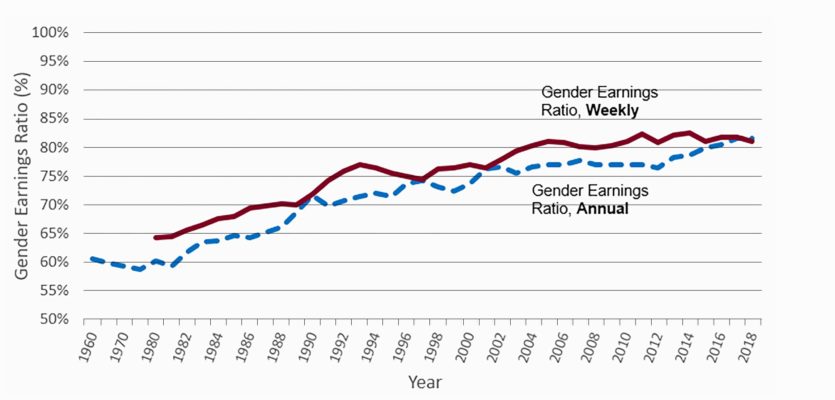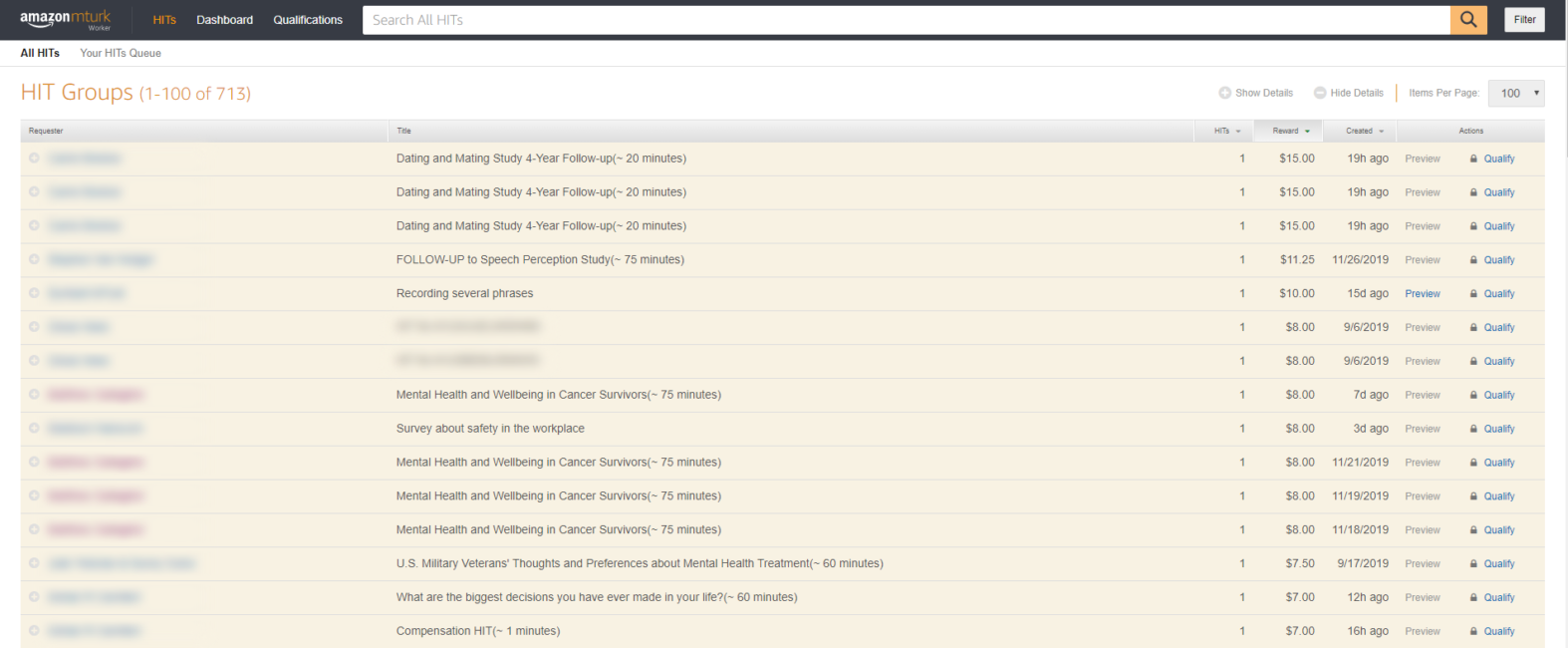Anonymous and Unequal: The Gender Pay Gap on Amazon MTurk

By Cheskie Rosenzweig, MS & Leib Litman, PhD
Imagine an anonymous occupational environment. Employers and employees never meet. Employees cannot be selected based on gender, race, or any other personal characteristics. Discrimination in job selection is not possible. Instead of employers selecting employees, the employees are free to choose the jobs they want. Could a gender wage gap arise in such an occupational environment?
Surprisingly, the answer appears to be yes. In a recent study, researchers from CloudResearch, in conjunction with outside experts, analyzed nearly 5 million tasks completed on Mechanical Turk, an anonymous online marketplace. Tasks were completed during an 18-month period between January 2016 and June 2017 by 12,312 female and 9,959 male workers. The study found that women earned 10.5% less than men per hour.
Key Findings
- Study tracked 12,312 female and 9,959 male workers on the Amazon MTurk platform
- Findings are drawn from nearly 5 million tasks completed between January 2016 and June 2017
- Study found that women on Amazon MTurk earned 10.5% less per hour than men
- Women selected tasks that were advertised to pay 5% lower than those selected by men
- This gender pay gap persisted after controlling for known contributing factors, indicating that wage inequality can still occur in an anonymous environment
Why would a gender wage gap arise on an anonymous platform where discrimination is impossible and participants are free to choose whatever work they want? The authors suggest that the answer may be due, in part, to the gap between men’s and women’s reservation wages. They hypothesize that women may take tasks that pay less on MTurk due, in part, to discrimination in more traditional labor markets, which leads women to undervalue their labor.
Background
The gender wage gap is unfortunately still very much alive in today’s society. In 1990, women working full-time, year-round earned 30% less than men. As of 2018, this number was still around 20%.

Previous research has highlighted a number of variables that contribute to the gender wage gap:
- Discrimination, both overt and covert, still operates in decisions about hiring, promotion, task assignment, and/or compensation.
- Industry or occupational segregation, in which men and women work in different industries, accounts for approximately half of the wage gap according to some estimates.
- Human capital factors such as education, skills, speed, and workforce experience.
- Gender-specific differences in time availability and flexibility, which can affect promotions and remuneration.
Women have increasingly accumulated human capital factors such as education, and their determination to break into occupations previously dominated by men, such as medicine, has helped reduce the wage gap. Yet, discrimination still exists, occupational segregation persists in some fields, and women with children are monetarily penalized and make significantly less than their male counterparts, an imbalance also known as the motherhood penalty.
Does the Gender Pay Gap Exist on Amazon’s MTurk?
MTurk is an online microtask platform where people (called requesters) post small tasks that they want anonymous workers to complete. Workers are paid upon completion of their task, and can choose how, when, and what tasks they want to take on. Workers are given worker IDs so that they can complete tasks anonymously, whenever they want, on whatever they want.

The average earnings across the time period of the investigation were $5.70 per hour, with women earning an average of 60 cents less than men per hour. However, the study did not focus on how much money people made — what is referred to as the earned wage. Instead, the study focused on which tasks people selected — what is referred to as the advertised wage.
The earned wage can be influenced by multiple factors, including the speed with which tasks are completed. People who complete tasks faster end up making more money. While the speed of task completion could be interesting, it was not the focus of this study. Instead, this study was specifically interested in the choices that men and women make when selecting tasks. For these reasons, the study specifically focused on gender differences in selecting tasks based on the advertised wage.
As Figure 2 illustrates, workers are able to see how much a study pays and how long it is expected to take on their dashboards. Based on that information, they can calculate the approximate hourly wage for tasks prior to selecting which to work on. Based on the advertised wage, women were found to select tasks that were advertised to pay 5% lower compared to men.
Next, the researchers attempted to control for factors known to drive the gender wage gap in other settings. They calculated the impact on the advertised wage gap on MTurk of gender differences in age, education, number of children, experience on the platform, speed of task completion, and task-type choice (e.g., advertised task length, difference in task titles). They found that some portion of the advertised gender wage gap came from these factors, but even after statistically controlling for these factors, women still chose tasks that paid 4.3% less than those chosen by men.
Implications for Research on MTurk: What Can Researchers Do About It?
The results of this study made it clear that it is important to pay attention to the gender wage gap even when conducting anonymous research on MTurk. The authors recommend that researchers use gender quotas in their surveys to ensure that the ratio of male to female participants who take any given task is equal, thereby encouraging equal pay on the platform for all.
Conclusion
This study is the first to show that a gender wage gap in advertised wages can arise in a completely anonymous marketplace, where gender discrimination and other factors that are known to contribute to the gender wage gap in traditional labor markets have been controlled for. The results of this study suggest that gender discrimination in traditional labor markets is more pervasive and insidious than previously thought. Perhaps the negative experiences in traditional labor markets lead women to undervalue their labor, leading to a downstream effect on wages even in markets where overt discrimination is absent.
Unlike traditional marketplaces where the gender wage gap has been difficult to reduce, a simple solution is readily available on Mechanical Turk. To significantly reduce the gender wage gap on Mechanical Turk, researchers should consider using gender quotas that would guarantee an equal distribution of men and women across all tasks, thus ensuring equal pay for both genders on MTurk.
The CloudResearch MTurk Toolkit offers a variety of features, including the ability to target participants using gender quotas, making it easy to set up a fair wage study. Sign up now to get started today!

